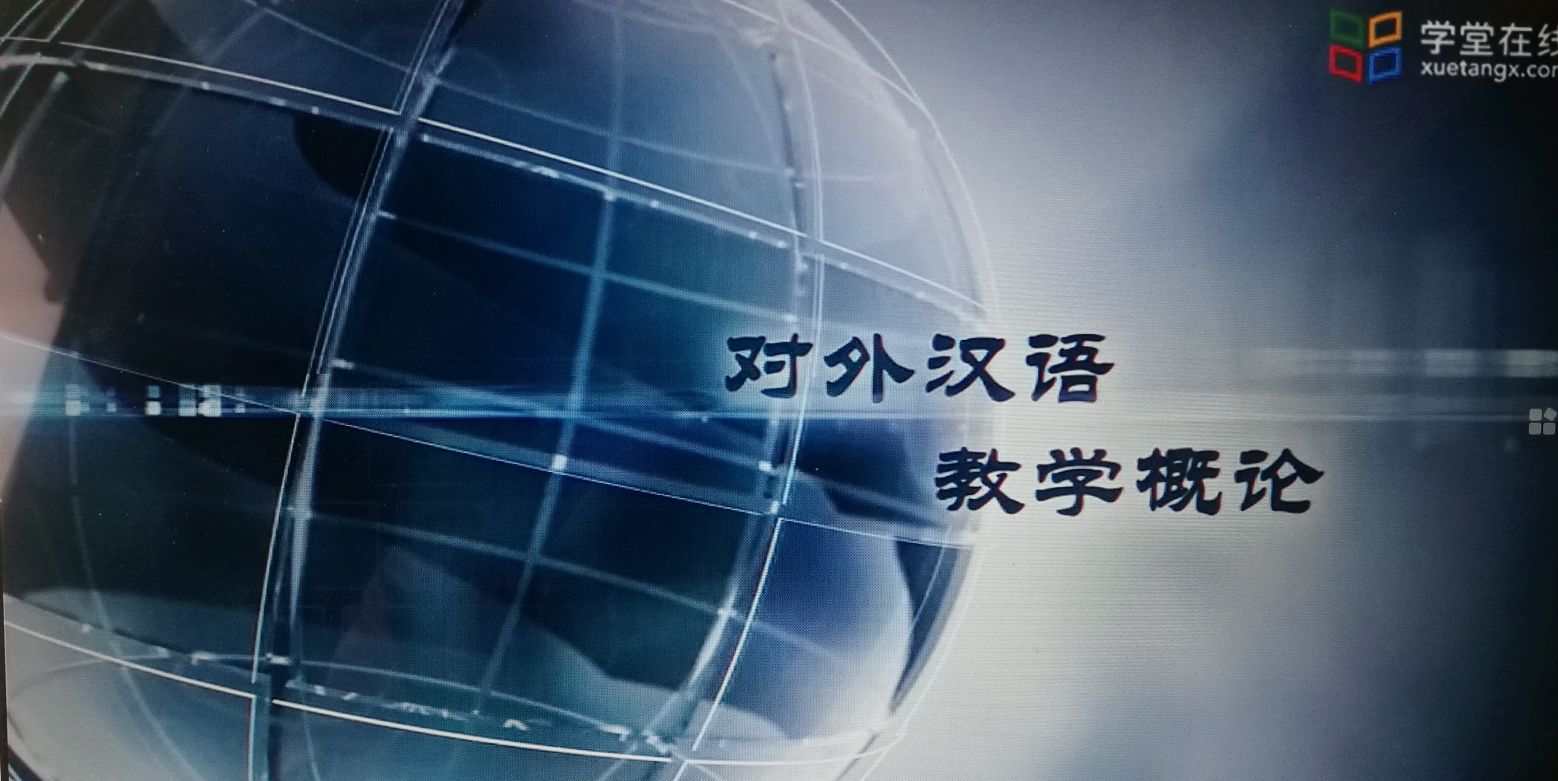
当前课程知识点:Innovation and Creative Thinking (创新与创意思维) > 13. Case Study (Selective)个案研究(选学) > Case Study: Keep-fit formula for Children (学童Keep-Fit方程式) > Case Study: Heart Rate Variability (心率变异性)
返回《Innovation and Creative Thinking (创新与创意思维)》慕课在线视频课程列表
Heart Rate Variability (HRV)
心率变异性
(Thomas) Hi, Professor Chung!
嗨,钟教授!
Hi!
嗨!
(Thomas) I understand that you have been working on heart rate variability. Tell us, what made you decide to work on this?
我知道你一直从事心率变异性研究。告诉我们,什么使你决定这研究方向呢?
Well, that is going to be a very long story.
好的,这说来话长。
Heart rate variability is talking about our heart, how our heartbeats.
心率变异性是探讨我们的心脏,探讨心脏如何跳动。
When I started my nursing, I started to learn about our hearts, like inthe ECG.
当开始学习护理时,我也开始学习有关我们心脏的知识,像心电图。
And then I learned that without a heart, we will die.
接着我了解到,如果没有心脏,我们便会死亡。
And in one of the lectures, the lecturer talked about the autonomic nervous system.At that time, I really don't know what that is.
而且在一次上课中,老师讨论的是自主神经系统。当时我真的不知道它是什么。
But then I went to the library, and then I searched the literature,and then I find that it’s really really very interesting because the autonomic nervous system is the kind of system that makes us balance.
不过之后我去了图书馆,查阅文献,然后我发现自主神经系统非常非常有趣,因为它能使机体保持平衡。
Only if we balance, then we will have a normal life.
我们只有保持平衡,才能有正常生活。
That made me think about, well, whenever I went to see the Chinese medicine doctor, they also talk about balance.
这让我开始思考,每次我去看中医,医生也会谈及平衡。
Then I suddenly shift from like anatomy, physiology to kind of like Chinese culture, Chinese philosophy.
这样我便从解剖学、生理学转到中国文化、中国哲学
Later on when I worked on pain management and I really found a balance. I was really talking about how to cope and how to lead a normal life.
后来,在研习疼痛管理时,我确实找到了这种平衡。我真正探讨的是如何应付和正常生活。
That really makes me start off to search literature, search experiments that have been done in the heart rate related area.
这确实促使我开始检索与心率相关领域的文献和实验。
Then one day, in the computer I found that in America they have a heart mathematics laboratory or association, something like that.
然后有一天,在电脑上我发现美国有一个心脏数学实验室或学会,类似这样的。
I found it, well, interesting, how come we get mathematics into physiology?
我发现这很有趣,我们如何可以把数学纳入生理学上?
Then it really likes a ball, I started off with that.
它就像皮球一样,我便开始于此。
I think that would be dated back in the nineteen eighties. I would say end of nineteen eighties.
我想这可以追溯到1980年代,我是说80年代末。
(Thomas) Well, sounds like you are a pioneer in this area. So how did you find the mathematics part of it, difficult?
好的,听起来你是这个领域的先驱。你认为它的数学部分怎么样,难吗?
Well, not really, as long as you understand natural log, antilog, the spectrum, how are we going to, like, when you put your hand over here, you feel a beat, Ok? That is the heart beat.
好的,其实不难,只要你能理解自然对数、对数、频谱,以及我们将如何做,例如你把手放在这里时,可以感觉到搏动,是吗?这是心脏搏动。
If you take that heartbeat out and put it into a machine, there is a programme called Fast Fourier Transformation.
如果你将心脏搏动信号并导入一仪器中,內设有「快速傅里叶转换」程序。
Once you transform it, then you are actually changing a two dimension graph into the other way.
一旦信号转换,其实你是将二维图谱转变为其他形式。
Instead of having time and the X axis, this time we have the sine curve on the X axis and tells you much much more information.
这次我们不是有时间和X轴,而是有在X轴的正弦曲线,这可以告诉你更多更多的信息。
So as long as you understand that, that's fine.
所以只要你能理解这些,就可以了。
(Thomas) It all sounds like foreign language to me. I have given them all back to my teachers.
这对我来说就像听外语一样,我已经把学的这些全还给老师了。
(Thomas) Now, you have already made a product, as I understand, to detect emotion. Could you tell us a bit more about it?
现在你已经做出产品,据我理解是用于检测情绪。你能否和我们多讲一些?
Oh yeah! May I just take a few moments to talk about the heart rate variability and the relation with the autonomic nervous system?
好的!我可以先花一点时间解释心率变异性以及它和自主神经系统的关系吗?
You know, the autonomic nervous system is the system that you don't need to put any effort on, because they don't go through your brain, OK?
你知道,自主神经系统你不需要花费任何努力去操控,因为它不经过大脑,明白吗?
It works automatically.
它会自动工作。
Your heart function, your lung function, your endocrine function, they’re all related to the autonomic nervous system.
你的心脏功能、肺功能和内分泌功能,都与自主神经系统有关。
There is still one more thing that’s related to it. It’s your emotion. So the emotion actually can be reflected from the heart rate.
还有另外一件事也和它有关,是你的情绪,所以情绪其实可以从心率上反映。
So, because of that, I make use of the heart rate and then looking into how it varies between each beat.
因此,我利用心率,探究每次跳动之间如何变化。
Of course, I have collected data. I worked out a mathematical model that tells you, well, your heart rate beats like this, you are happy; when your heart beats like that, you are sad.
当然,我收集了数据,然后制订出一个数学模型。它会告诉你,当心跳像这样时,你是快乐的;而当心跳像那样时,你是悲伤的。
Then it comes up with the emotion and heart rate variability.
这提出了情绪与心率变异性的关系。
(Thomas) Could you tell us a bit more about the research that you did on this?
能否将你在这方面做的研究讲得多一些?
Oh, yeah. Actually not just me, I have a team of people that work together.
好的。实际上不只是我,我有一个团队共同工作。
Basically two steps, the first step is I have to think about how to standardize the stimulations. Because I want to know when you're happy, what is your heart rate? When you are sad, what is your heart rate?
基本上,有两个阶段。第一阶段,我需要思考如何将刺激标准化。因为我想知道当你快乐时,心率是什么样?当你悲伤时,心率又是什么样?
In another word, the happy, the sad has to be standardized.
换句话说,快乐或悲伤都需要被标准化。
So how am I going to do it?
我将如何做呢?
You know, we have Youtube. In the Youtube, we have a lot of different video clips.
你知道我们有YouTube网站,在Youtube上,我们能找到很多不同的视频片段。
Some are very happy, keep you laughing, like all these very funny movies.
有些是很快乐的,使你一直哈哈大笑,比如非常有趣的电影。
Some are really sad, like having people died, having people like begging for food.
也有一些视频是很悲伤的,比如有人死亡或有人乞讨食物。
Basically, we downloaded, as far as I remember, thirty video clips.
基本上,我记得我们下载了30个视频短片。
Then I have recruited thirty subjects.
之后我招募了30名研究对象。
Because happy emotion reactions, they are really culturally related. So these thirty subjects are all Chinese, Hong Kong Chinese.
因为人们对快乐的反应与其文化背景息息相关。所以,这30名研究对象都是中国人,中国香港人。
They were born there, they grew up there, they received their education there and they have daily life there. So I make sure the cultures are the same.
他们在那里出生,在那里长大,在那里接受教育,日常生活都在那里。这样我可以确保研究对象有相同的文化背景。
They are all healthy ones. This is also very important. Because if you have something like, if you have a cancer, probably the way that you see when you watch a video, your reaction may be different.
他们都是健康的,这一点也很重要。因为,如果身体不健康,比如得了癌症,在观看视频时你领会的状态,你的反应可能是不一样的。
So I get all the normal subjects.
所以,我纳入的全都是正常的研究对象。
Then I get them to watch the video and give me a rating.
接着我让他们观看视频并给出评分。
Of course tell me, when they watch it, how do they feel? Like happy, sadness or even anger. Put all the emotion there and also the intensity of their emotions.
当然也告诉我,观看视频时他们的感受如何?比如快乐、悲伤,甚至愤怒。在那里写下所有的情绪及其强度。
I carried that out and then all these people, they watched the video and I collected the data and then calculated it.
我播放所有的视频,全部研究对象都要观看视频,然后我收集数据并进行计算。
Only those with a hundred percent agreement then I would take that out. So I have like a thirteen happy video clips, and twelve sadness video clips.
只有研究对象百分之百认同的视频,我才会取出来使用。因此,我有13条令人快乐的视频片段和12条令人悲伤的视频片段。
Then, I bring these two series of clips to the next stage.
然后,我在第二阶段釆纳了这两种视频片段。
In that stage, first, I have to track their ECG, their heart rate beating.
在这阶段,首先我会追踪他们的心电图,他们的心率跳动。
For the second stage, with the two videos, we worked out an experimentation protocol.
基于选出的两种视频,我们制定这阶段的实验方案。
By that, what I mean is, if you have a subject, like if you are my subject, when you come to my laboratory, I'll let you sit down for a little while and then connect you with the ECG.
我的意思是,如果你有一个研究对象,假设你是我的研究对象,当你来到实验室时,我会让你先坐一会儿,再连接心电图。
At that time, we use a Polar watch. It's kind of watch like this.
当时我们用的是Polar手表,它就像这种手表。
When you put on the watch, it will catch your ECG.
当戴上手表时,它会采集你的心电图。
Then after the experiment, I download it. At the same time, of course, I get you to complete the demographic questionnaire.
试验结束后,我下载数据。与此同时,我当然亦会让你完成一般人口学问卷。
Because if you tell me you have a respiratory problem, then I would say good bye, because that affects my result, affects the heart rate variability.
因为如果你告诉我你患有呼吸系统疾病,那我就得说再见了。因为它会影响研究结果,影响心率变异性。
Similarly, if you have like heart problem, if you have a mental health problem, it’s also not fit for my studies.
类似地,如果你患有心脏病,或有精神健康问题,也不符合研究要求。
So that's the way that we do the subject recruitment.
这是我们招募研究对象的方法。
Once they fit the criteria, they came to the lab and sit down, connected to the Polar watch.
只要研究对象符合标准,他们会来到实验室坐下,戴上polar手表。
We have programmed the video and their response sheet.
我们编排好视频播放程序和他们的回应表。
That means when they watch the video after five minutes, then another screen will pop up asking them: What is your emotion? What is the intensity?
这是说,他们观看5分钟视频后,电脑屏幕会自动跳出问他们:你的感受是什么?强度如何?
So what you need to do is just to press on the button.
所以你需要做的只是按下按钮而已。
Then the data would already enter into our system.
然后数据就会进入我们的系统。
You might ask, well, what are the sequences?
你可能会问,视频的播放顺序是什么?
Do I watch happy, happy, sadness and happy, and then sadness video clips, and then I will tell you difficult to tell because you have to draw it.
是不是快乐、快乐、悲伤、不快乐和悲伤的视频观看顺序?这很难说,因为你需要抽签。
That is, what we call random drawing. So that we won't have any, try to eliminate error or bias.
这就是我们说的随机抽样的,所以我们不会有次序,尽量消除误差或偏倚。
After we finish with the data collections, then I download all the data and then put the data through a machine called PowerLab.
数据收集完毕后,我会下载所有数据并导入到一台仪器中,它叫作PowerLab。
That helped me to change all these heartbeats that you are familiar with like 70 per minute, 72 per minute, and all these beats would change into frequencies.
它可以帮助我转换收集你很熟悉的所有心跳,如每分钟70次、每分钟72次这样的心跳,所有心跳都可以转换成频率。
It will come up with high frequency, low frequency, very low frequency, low low frequency, different parameters, different readings.
它会得出高频、低频、极低频和超低频数据,这些不同的参数代表不同的读数。
When I have the readings, I perform different kinds of calculations so as to get meanings out of these frequencies.
当我拿到这些读数时,我采取不同的计算方法来得出这些频率蕴含的意义。
Of course, we have different algorithms so as to classify what is happy, what is sadness and all these. Then come up with a mathematical formula.
当然我们有不同的算法,来分辨什么是快乐、什么是悲伤和所有这些,并提出了一个数学公式。
With that, what we really mean is, one day, if you put your hands out and I put my gadgets with my mathematical model over your hand or anywhere that pick up the pulse, maybe here, maybe the body, I pick up the pulse, then through the machine, through the computer, the calculation will come up and say, oh, you are happy, you are sad.
有了这个,我们要说的是,有一天,如果你伸出手,我把表带放在手腕上或其他可以获取脈搏的部位,可以这里、你的身体,我可以检测到脈搏,然后通过仪器输入电脑,计算便会开始并指出,你是快乐的,你是悲伤的。
That is the whole research.
这就是整个研究。
(Thomas) I understand that you got a set of your device here, would you like to show us please?
我知道你把那套仪器带过来了,能不能给我们展示一下?
Yeah!
好的。
Just now I showed you, you had a pulse, on your hand, the mathematical formula here.
我刚刚给你展示的,你有脈搏、在你的手、一个数学公式在这里。
Look at that, that is this one.
看这个,它就是这个仪器。
So the mobile phone, because the program is already in the mobile phone.
The program is in here, that is, the mathematical model is in here.
程式在手机里,也就是数学模型在这里。
But then you still need something like a Polar watch to take, to track your heart rate or the pulse rate.
That is, this one.
就是这个。
Yeah, can you take that for me?
是的,你能帮我拿一下吗?
For this one, actually inside there you can see the blue light over here.
其实这个仪器里面,你能看到蓝色的灯。
These two golden points are really just electrical plates that connect to the electricity so that you can get it charged like your mobile phone, the contact.
这两个金色的点是充电插口,所以你可以像手机充电那样,连接电源给它充电。
In there we have a program that picks up the pulse signals.
我们已经有程序在里面来收集脈搏信号。
All you need to do is just to wear it with the strap, like a watch over here.
你所需要做的只是用表带戴上它,像手表一样。
Then you may say, well, can I turn it around and have it here?
你可能会问:我能不能把它转过来戴在这里?
It doesn’t matter because it works by what we call the PSG, so it’s just like the oximeter that you have in a ward. So you place it even over here, you can still track your pulse.
这不影响的,因为它通过PSG运转,就像病房里的血氧监测仪一样。所以,即使你把它放在这里,它还是能检测脈搏。
(Thomas) It said you’re excited. You must be very proud of your own product.
Of course, thank you!
当然,谢谢。
When I wear it for the heart rate variability, because this and the phone are connected by the blue tooth, when it is on, the blue light here is on. It will continuously track the signals collecting into the phone over there.
当我戴上它来检测心率变异性,因为它和手机通过蓝牙连接,当它开始工作时,这里的蓝灯是亮的。它会持续检测信号并将数据收集导入手机。
Actually the signal is here, but they will also transfer to there and then display on the screen so that you can see the results.
其实信号是在这里,但它们会转换到那里,并展示在手机屏幕上,所以你才能看到结果。
Normally, we take five minutes. It will continuously collect the data, so we will update continuously.
正常情况下,我们需要5分钟,它会持续收集数据,我们也会不断更新结果,
So your emotional changes can be tracked.
所以你的情绪变化能够被捕捉到。
(Thomas) Who do you think that would use this device?
你认为哪些人会使用这个仪器?
There are quite a number of people that I think they would use this kind of device like for the small children, for those who have ASD or those who have ADHD.
我认为有很多人能使用这种仪器, 比如小孩子,患有ASD(孤独症谱系障碍)和ADHD(多动症)的孩子。
These are the group of people, the group of children that are difficulty in expressing themselves.
他们是一群在自我表达上有困难的孩子及人士。
You know, they are hyperactive, they are really living in their own world.
你知道他们过度活跃并且活在自己的世界里。
They do not know how to communicate.
Their parents are really worried because they don't know what their kids’ feeling is, so that would be helpful for the parents.
所以他们的父母非常担心,因为他们不知道自己的孩子的感受,因此这个仪器将对父母很有帮助。
Even for the teachers in the school, if you are in the primary school, if you can still remember, sometimes you do have your classmates that they keep on rolling back and forth and without knowing others around and don't communicate.
甚至对学校老师也有帮助, 如果你在小学,还能记得有时你的同学会在地上来回打滚,不认识周围其他人,也不沟通。
Then for the teachers, sometimes it is really difficult. So with this, they can help to tell.
对老师来说,有时这很困难。所以有了这个沟通,它们可以帮助老师去辨别。
Another group of people that I think very useful are those who suffer from Parkinson’s Disease.
我认为对于另一种人也会很有帮助,他们是患有帕金森病的人。
Maybe you heard about Parkinson’s Disease before, but for those who have not, I just briefly let you know.
可能你之前已经听过帕金森病,但有些人没听过,让我简短讲解一下。
In Parkinson, all these patients or all these people, when you look at their faces, kind of like wear a mask. They don't have any expressions.
对于帕金森病,所有病人或所有人,当你看着他们的脸时,他们就像戴了面具一样,没有任何表情。
Like me now. They don’t laugh just like that, like a mask.
像我现在这样。他们不会笑,就像这样,像戴了面具。
But cognitively, they are active, they know what they want, and they know how they feel.
但在认知上,他们是活跃的,他们知道自己想要什么,知道自己感受如何。
The problem is because of Parkinson's Disease, they cannot express themselves.
问题在于,因为帕金森病,他们无法表达自己。
You see how suffering that is!
你可以理解那是多么痛苦!
So if we had a watch like that, at least, that can help them to communicate with people around, so that we would know.
所以如果我们有一个像那样的手表,至少可以帮助他们与周围的人沟通,我们也能够知道他们的感受。
Humans really need communications. Communication makes generation to generations.
The way that we keep the whole generation alive is communications.
保持整个世代延续的方法是沟通。
With this watch, and hopefully that can help those who cannot communicate for whatever reason to be able to communicate.
因此有了这个手表,就有希望帮助那些无法沟通的人,不论任何原因都能够沟通。
(Thomas) Sounds like a great product!
听起来是个很棒的产品!
Oh yes, I think so.
是的,我也认为。
(Thomas) Do you consider yourself creative?
你认为自己很有创意吗?
In a way, yeah!
从某种程度上,是的。
(Thomas) What kind of personality do you think will make a person creative?
你认为哪种性格会让一个人富有创意?
I think you always have a beginner's mind.
我认为你要一直保持初学者的心态。
Whatever you look at things, they are new to you, then you will discover something new, something interesting. Although it's still the same thing, your mindset changed. With a new mindset, when you look at it with a beginner's mind, everything will be fresh.
不论你看待任何事物,它们对你来说都是新的,那你将会发现一些新的、有趣的东西,尽管还是同样的事物,但你的心态已经改变。基于新的心态,当你用初学者的身分去领会它,那么每个事物都将是新鲜的。
(Thomas) Sounds very interesting! I hope that you develop more products in the future. Good luck to you!Thank you!
听起来非常有趣!希望你将来研发更多的产品,祝你好运!谢谢!
Yeah, thank you!
好的,谢谢!
返回《Innovation and Creative Thinking (创新与创意思维)》慕课在线视频列表
-Assessment: Challenge Based Learning
-Identifying Why People May Oppose Your Ideas(明确人们反对你想法的原因)
-The Process of Planning the Presentation (汇报的计划过程)
-Ways To Get Others To Feel Positive About Your Ideas(让他人对你的想法感到积极的方法)
-Solution identification and implementation
-Solution appraisal and evaluation (方案的评价和审核)
-Case study: Telehealth and telecare Initiative (远程医疗和远程照护的首创)
-Case study: Acu-magnetic therapeutic for knee osteoarthritis(磁疗护膝治疗膝骨关节炎)
-Measures of creativity and creative thinking
-Creative thinking in everyday life1
-Creative thinking in everyday life 2
-Case study: Making Crispy Vegetables(制作酥脆蔬菜)
-Tutorial: How To Sell Your Ideas To Others(如何向他人推销你的想法)
-Case Study: Heart Rate Variability (心率变异性)
-Case Study: sleep apnoea(睡眠呼吸暂停)
-Case study: sleep apnoea (continued)


